Machine learning is one of the most exciting technologies in today’s world. It pays really well too (~$150k/yr according to Indeed).
Wait, machines that can learn? Are we talking The Terminator??
No. Well sort of, just not walking, killing machines quite yet. And hopefully that never happens. Although Robots are starting to dance pretty well.
Don’t let the name fool you, Machine learning sounds complicated but we’re talking about software programs learning from input (like a set of data or images) and then taking some intelligent action as a result.
The good news is that having a good machine learning book can make all the difference between getting it and struggling until you give up.
And if you’re looking to get into machine learning or are curious about the field, a good book makes a great starting point.
Whether you’re a beginner, looking to delve into deep learning or neural networks or use machine learning for algorithmic trading, there is something for you among the top rated machine learning books below.
Disclosure: This article includes affiliate links that may provide a commission to me at no cost to you if you make a purchase through them.
Table of Contents
- What are the best Machine Learning Books?
- Hands-On Machine Learning with Scikit-Learn, Keras, and TensorFlow
- Machine Learning For Absolute Beginners: A Plain English Introduction
- AI and Machine Learning for Coders: A Programmer’s Guide to Artificial Intelligence
- The Hundred-Page Machine Learning Book
- Building Machine Learning Powered Applications: Going from Idea to Product
- The Master Algorithm: How the Quest for the Ultimate Learning Machine Will Remake Our World
- Introduction to Machine Learning with Python: A Guide for Data Scientists
- Learning TensorFlow.js: Powerful Machine Learning in JavaScript
- Machine Learning for Kids: A Project-Based Introduction to Artificial Intelligence
- Machine Learning for Algorithmic Trading
- Deep Learning with Python
- Neural Network Projects with Python
What are the best Machine Learning Books?
Hands-On Machine Learning with Scikit-Learn, Keras, and TensorFlow
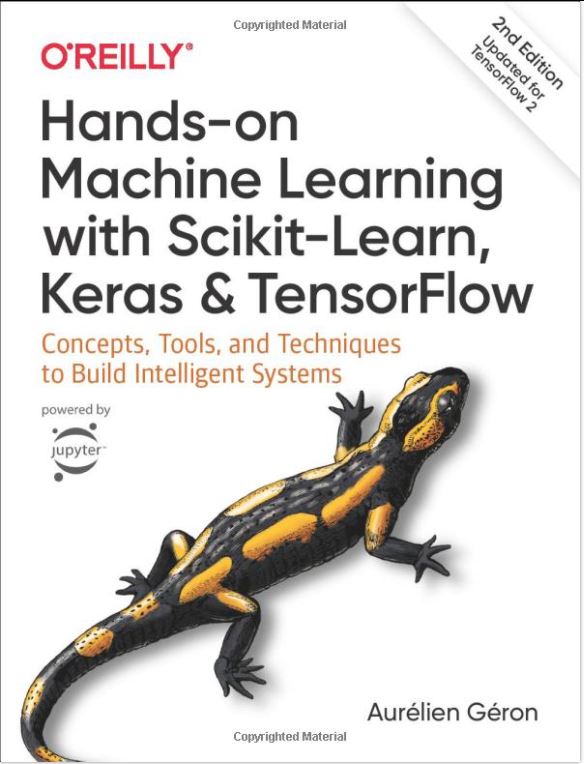
Author: Aurelien Geron
Where to Buy
Summary
Hands down, Hands-On Machine Learning is the best machine learning book you can read if you’re new to machine learning, deep learning, and neural networks.
You will get a hands-on experience of the concepts, tools, and techniques you will be using to implement machine learning in your projects.
Who Is It For
Hands On Machine Learning is geared towards python programmers with close to zero knowledge of machine learning.
As a prerequisite, you need to be comfortable with python and its data science libraries like NumPy, Pandas, and Matplotlib.
What You Will Learn
A range of machine learning tools ranging from the simplest like linear regression to advanced deep learning concepts.
You will also learn how to use Scikit-Learn, Tensor Flow, and Keras libraries for machine learning projects and neural networks.
Whether your goal is to make a DIY robot smart, train a neural network, or mine hidden gems from company data, Hands-On Machine Learning will show how.
Pros
- Color illustrations make it a fun read
- Covers recent developments in the field
- Hands-on approach with minimal theory
- Excellent coverage of the field
- Clear explanations in simple English
- Great reference for machine learning projects
Cons
- Not for the absolute beginner in coding as it require basic python experience
- Not a light read – comes in at almost 800 pages
Machine Learning For Absolute Beginners: A Plain English Introduction
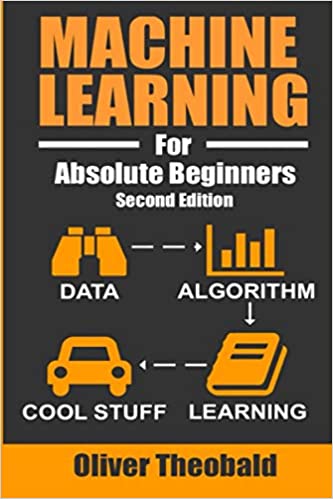
Author: Oliver Theobald
Where to Buy
Summary
Machine Learning For Absolute Beginners is the best first machine learning book for a beginner programmer to read.
It will equip you with the theoretical knowledge you will need before you can delve into practical machine learning projects.
Who Is It For
True to the name, Machine Learning for Absolute Beginners is designed for newbies in both programming and machine learning.
No coding experience assumed! The core algorithms are explained clearly in plain English so you won’t get lost.
What You Will Learn
The book provides a high level overview of all the basic concepts, models, and algorithms of machine learning.
Beyond this, it will also give you some basic practical knowledge to get started with machine learning.
Pros
- Perfect overview for complete newbies
- Practical and high-level intro to ML
- Clear explanations in plain English
- A quick read with a structured approach
- Visual examples make it engaging and easy to follow
Cons
- Not for anyone past the beginner stage
AI and Machine Learning for Coders: A Programmer’s Guide to Artificial Intelligence
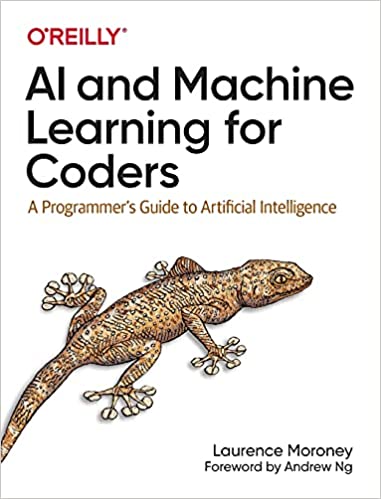
Author: Laurence Moroney
Where to Buy
Summary
If you already know how to code and looking for a quick way to get started building machine learning models, AI and Machine Learning for Coders is the book for you.
The best thing about it is that it’s written by a gifted teacher who has an uncanny ability to explain complex concepts in an easy to understand manner.
Who Is It For
AI and Machine Learning for Coders is developer focused.
It’s especially ideal for python and mobile developers, as a basic understanding of Python, Swift, and Kotlin is a prerequisite.
What You Will Learn
To equip you with practical knowledge and give you the confidence you need to get into a career in ML, the book will show you how to tackle the most common scenarios in ML.
These scenarios include natural language processing, computer vision, and sequence modeling. You will learn how build models with TensorFlow and how neural networks work.
Pros
- Very comprehensive yet concise
- Hands-on approach with code samples
- Explains complex concepts clearly
- Prepares you for real life scenarios
Cons
- Not suitable for complete coding newbies as it requires basic knowledge of Python, Swift, and Kotlin
The Hundred-Page Machine Learning Book
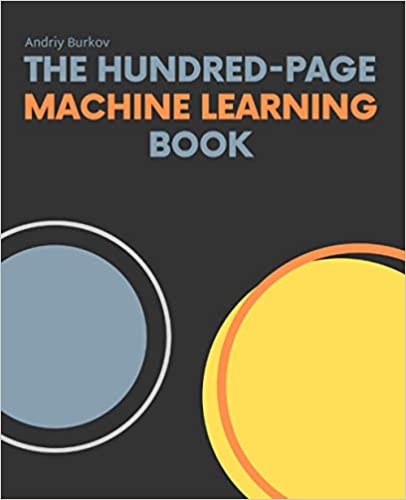
Author: Andriy Burkov
Where to Buy
Summary
For a quick introduction into machine learning, The Hundred-Page Machine Learning Book will give you a solid introduction to machine learning in about 100 pages.
This makes it an ideal first read if you’re venturing into the field or just interested in getting a broad view of the field.
Who Is It For
Anyone interested in machine learning will find this book useful.
Newcomers will get a solid introduction into all the fundamentals while everyone else will appreciate the valuable insights from a world class practitioner.
What You Will Learn
Despite its compact size, the Hundred-page book covers all the major machine learning approaches, starting from linear and logistic regression all the way to deep learning.
Pros
- Paperback version is in full color
- Concise introduction and a quick read
- Great for beginners as well as practitioners
- Both practical and theoretical elements
- Robust coverage and clear writing style
Cons
- Coming at slightly over 100 pages, some topics would benefit from deeper coverage
Building Machine Learning Powered Applications: Going from Idea to Product
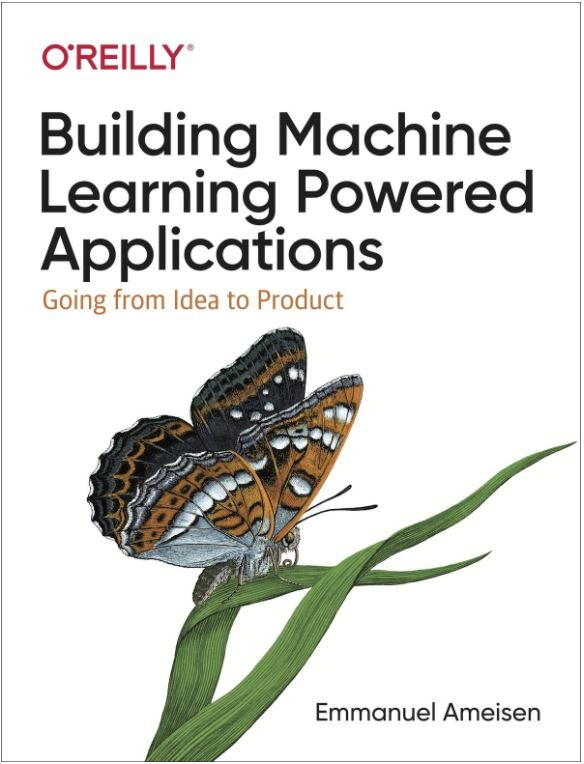
Author: Emmanuel Ameisen
Where to Buy
Summary
Building Machine Learning Powered Applications is an outstanding machine learning book that will guide you through the real world implementation of ML applications.
If you are looking for practical advice on how to take ML models from idea to production, you can’t go wrong with this one.
Who Is It For
Anyone looking to understand the end-to-end process of developing real world machine learning applications will find the book a worthy read. It does require some familiarity with Python syntax.
What You Will Learn
This book will take you through the entire end to end process of building machine learning systems.
From refining the problem, developing the program, debugging, to deploying to customers and monitoring.
You will build an example ML application from scratch and learn the tools, best practices, and challenges encountered in the process.
Pros
- Describes the entire ML pipeline
- Highlights the best practices
- Easy to read and grasp
- Features interviews with industry leaders
- Uses an example project as a case study
Cons
- A lightweight overview, doesn’t go very deep
The Master Algorithm: How the Quest for the Ultimate Learning Machine Will Remake Our World
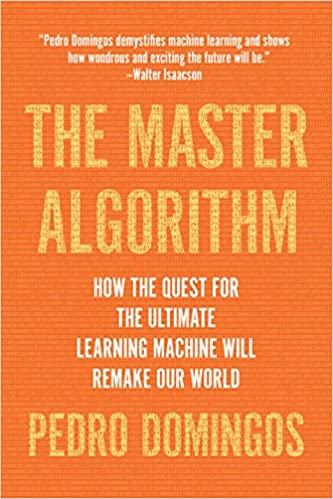
Author: Pedro Domingos
Where to Buy
Summary
Ever wonder how AI and machine learning will change your life and what negative implications it might have?
The Master Algorithm: How the Quest for the Ultimate Learning Machine Will Remake Our World is the book to read to learn about the current status of machine learning and what the future might have in store for us.
Who Is It For
The Master Algorithm is a highly inclusive popular science book written for the general audience.
The language is accessible to a general audience. And the content is rigorous enough for more experienced practitioners.
What You Will Learn
The book explains the five machine learning approaches and how these styles can be combined to create a master algorithm capable of solving any problem you throw at it. It also takes a look at the dark side of ML.
Pros
- Accessible to a general audience
- Doesn’t use heavy jargon
- An interesting and insightful read
- Delves into philosophical issues
Cons
- I think the book could use more diagrams and more in depth explanations.
Introduction to Machine Learning with Python: A Guide for Data Scientists
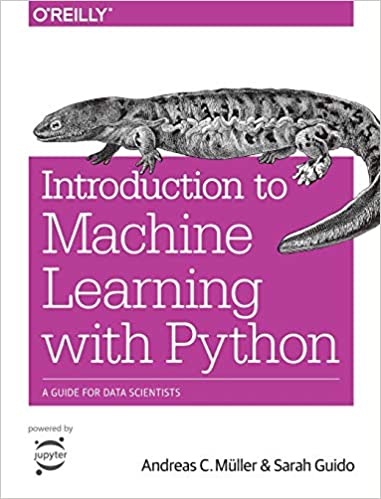
Author: Andreas C Muller & Sarah Guido
Where to Buy
Summary
The name says it all. Introduction to Machine Learning with Python is a fantastic introduction to machine learning in Python.
It introduces not just the theory but also the implementation. It will teach you practical ways to build your own machine learning solutions using Python.
Who Is It For
Anyone looking to get started in ML with Python will benefit from the clear and non-overwhelming explanations.
A heavy programming background isn’t required but having a bit of Python, NumPy, and matplotlib libraries knowledge helps.
What You Will Learn
You will get an understanding of Machine Learning from the bottom-up, a step at a time. Core ML concepts are elaborated clearly.
This book will also show you how various machine learning algorithms work and how to put them into practice using Python and the scikit-learn library.
Pros
- Well designed examples and visual explanations
- Has an intuitive structure
- Covers both the concepts and implementation
- Easy for a beginners to follow
- Does not presume heavy programming skills
Cons
- More complex topics lack detailed explanations
Learning TensorFlow.js: Powerful Machine Learning in JavaScript
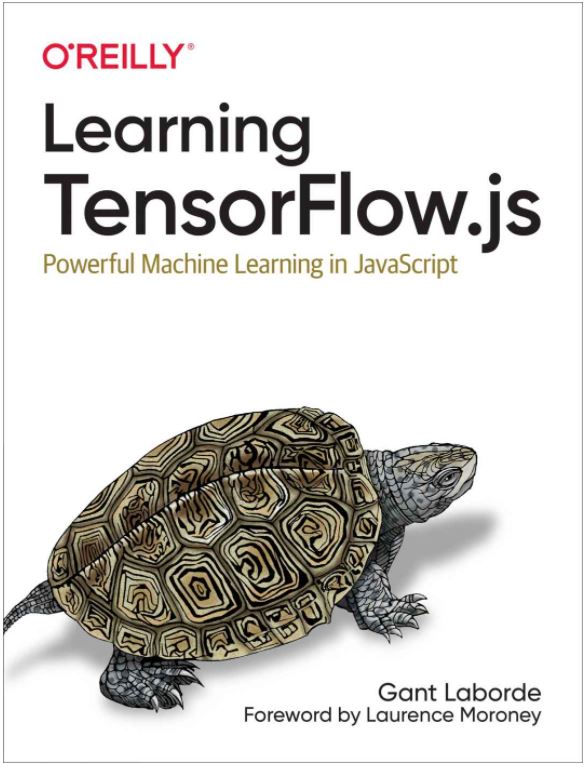
Author: Grant Laborde
Where to Buy
Summary
Unlike the other books on this list, Learning TensorFlow.js is all about building AI driven web applications.
It will show you how to build and deploy deep learning systems with TensorFlow.js.
Who Is It For
Are you a JavaScript web developer looking to venture into machine learning? This book is for you.
If you’re an AI specialist, on the other hand, the book will show how to apply JavaScript to bring your skills to client browsers and the Internet of Things (IoT).
What You Will Learn
Learning TensorFlow.js starts with an introduction to machine learning and then shows you how to use TensorFlow.js to create AI driven web apps.
It will also take your hand and walk you through tensors.
Pros
- Excellent resource on Learning TensorFlow.js
- Written for web developers and AI specialists
- Entertaining and educational
- Provides practical skills
Cons
- You do need to be comfortable with modern JavaScript to follow the book
Machine Learning for Kids: A Project-Based Introduction to Artificial Intelligence
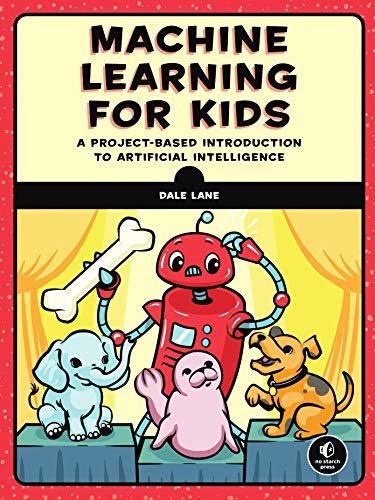
Author: Dale Lane
Where to Buy
Summary
Machine Learning for Kids is a fun and exciting way to introduce kids to the exciting world of machine learning.
Who Is It For
Machine Learning for Kids is rated for children of ages 12+, even if they don’t know how to code.
Kids get to develop fun AI powered games and apps using the kid friendly Scratch program.
What Kids Will Learn
Through a practical approach, kids will learn how to teach machine learning systems to recognize text, images, numbers, and sounds. This will pique their interest in this computer science field.
Pros
- Fun and intuitive teaching method
- Uses the Scratch programming language
- Interesting projects to complete
- Easy to follow exercises
Cons
- None we can think of!
Machine Learning for Algorithmic Trading
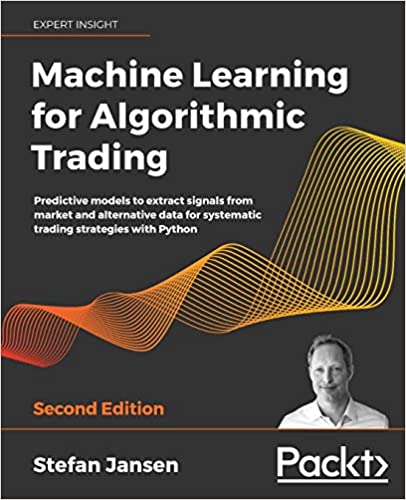
Author: Stefan Jansen
Where to Buy
Summary
Machine Learning for Algorithmic Trading is the ultimate book on applying Machine Learning for algorithmic trading.
It’s one of the most comprehensive book on the topic and it covers both trading and ML fundamentals.
Who Is It For
If you’re interested in getting hands-on machine learning knowledge for trading, this book is for you.
But it’s not just for traders. Anyone that uses predictive algorithms in data science and analytics will benefit from the book.
At least a basic understanding of Python and machine learning is a prerequisite.
What You Will Learn
You will learn how to use data and machine learning algorithms to design your own trading strategies that will improve your trading outcomes and earnings.
Pros
- Well written and logically organized
- Covers both financial and ML concepts
- Thorough with detailed examples
- Clear and concise writing style
- Applicable to all kinds of predictive situations
Cons
- A giant book, not for the faint of heart. Plus the huge number of libraries used leads to conflicts
Deep Learning with Python
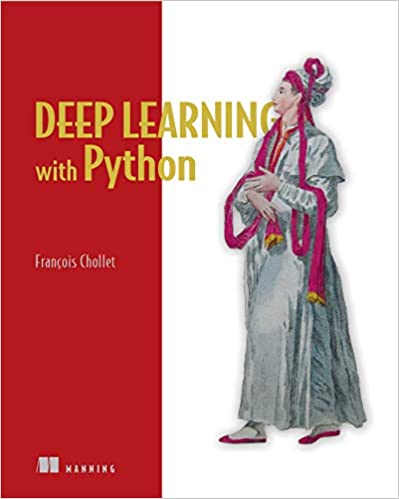
Author: Francois Chollet
Where to Buy
Summary
Deep Learning with Python is the best book on deep learning.
It manages to make a topic that’s as intricate as deep learning approachable.
It will give you a whole new level of clarity on the subject.
Who Is It For
This book has great reviews by students, software developers, and machine-learning engineers. It’s a great way to get started with Deep Learning.
If you’ve already had an introduction in deep learning, this is a great book to expand your knowledge.
If you’re looking to learn Keras, this is also the book for you. Basic knowledge of Python is a prerequisite.
What You Will Learn
Deep Learning with Python will leave you with a solid understanding and a practical intuition about deep learning.
You’ll be able to use Keras to accomplish remarkable things and implement deep learning in your projects.
Pros
- Very hands on and practical
- Simplifies complex concepts
- Intuitive explanations of concepts
- Print book comes with a free eBook
- Features explanations in code, not math
Cons
- Very practical and not focused on the formulas and algorithms
Neural Network Projects with Python

Author: James Loy
Where to Buy
Summary
Neural Network Projects with Python is an excellent way to learn how to build and run neural networks in python.
What makes it the best book on neural networks is that you will learn by doing.
This not only makes grasping the concepts easier but also means you will have a portfolio of neural network projects to showcase.
Who Is It For
Anyone interested in Neural networks, no matter their background, will find the book an interesting and valuable read.
Knowing the basics of machine learning and neural networks will help you get the most out of the book.
What You Will Learn
You will start by understanding the fundamentals of neural networks and deep learning.
And after developing the six practical projects in the book, you will be able to build and train your own neural networks from scratch.
Pros
- Very thorough with detailed explanations
- Easy to follow step by step walkthroughs
- Takes a learn by doing approach
- Results in a portfolio of ML projects
Cons
- You need to have basic programming skills in python
To Wrap Up
One of the best ways to gain a good grasp of machine learning is to supplement the best machine learning books with a good machine learning course.
Some top rated online machine learning courses you can look into include:
- Machine learning by Stanford University
- Machine Learning A-Z™: Hands-On Python & R In Data Science
- Python for Data Science and Machine Learning Bootcamp
Mike is the creator of Go With Code and a coder at heart 🙂